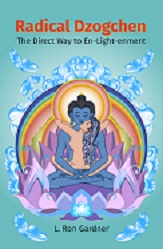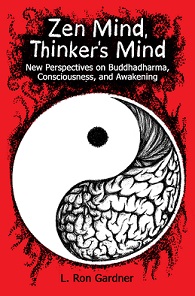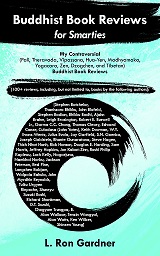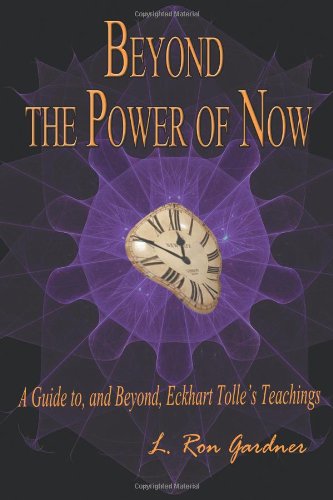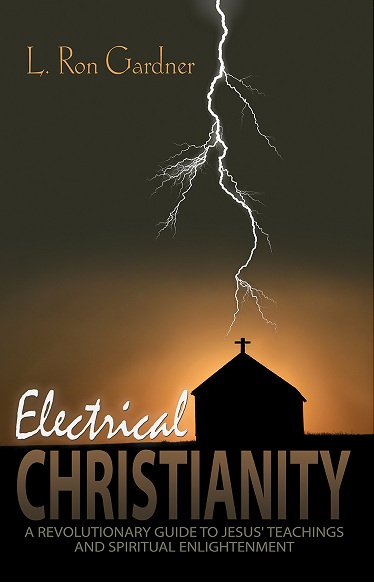A Guide to Tranquil Wisdom Insight Meditation (Bhante Vimalaramsi and David C. Johnson)
A Mixed Bag
[My 2-star Amazon review (NDA) of “A Guide to Tranquil Wisdom Insight Meditation: How to Attain Nibbana Through the Mindfulness of Lovingkindness†by Bhante Vimalaramsi and David C. Johnson.]
This book may prove to be a worthwhile read for some students of the Buddha’s teachings, but those with a deep understanding of Buddhadharma will find it problem-laden. I’ll start my review with the book’s positives, and end it with its negatives.
The book’s author, David C. Johnson, a long-time student of the American Buddhist monk Bhante Vimalaramsi (B.V.), presents a thesis -- how mindfulness of loving-kindness progresses through the Tranquil Aware JhÄnas to Awakening –that is unique (though I reject the existence of these jhanas, which I’ll explain). He also, rightly, points out the flaws in the popular teachings and practices of secular Buddhism and Theravada vipassana (including those of the renowned MahÄsi Sayadaw and S.N. Goenka).
In the Introduction to his “The Middle Length Discourses of the Buddha: A New Translation of the Majjhima Nikaya†(which Johnson repeatedly refers to for support of his, or B.V.’s thesis), Bhikku Bodhi writes, “Another method for attaining the jhanas mentioned in the suttas is the four divine abodes (brahmavihara) -- boundless loving-kindness, compassion, appreciative joy (i.e., gladness at others' success), and equanimity.â€But while Bhikku Bodhi supports the method of loving-kindness as a portal to the jhanas, in his lengthy Introduction, he only acknowledges the existence of the four traditional jhanas. And elsewhere, in his article “The Jhanas and the Lay Disciples--According to the Pali Canon,†he writes, “The Nikayas do not clearly distinguish two types of paths and jhanas.†But B.V. and Johnson argue for the existence of “tranquil aware jhanas,†which B.V.’s Tranquil Wisdom Insight Meditation (TWIM), mindfulness of loving-kindness, purports to progress disciples through to Nibbana.
Regarding the Tranquil Aware Jhanas, Johnson writes, “The jhanas described in the Anupada Sutta (which is in the Majjhima Nikaya) are not to be confused with the concentration states commonly taught elsewhere. They are the Tranqul Aware Jhanas that are being taught in the suttas, in which you maintain awareness of both mind and body. Their foundation is collectedness, not concentration.â€
I reread the Anupada Sutta (in fact, I reread he entire the 1200-page Majjhima Nikaya before I wrote this review), and I don’t buy B.V. and Johnson’s argument. First off, the traditional Four Jhanas are not states of concentration; they are states of infused contemplation, or samadhis. Buddhist writers (and this includes the overated Bodhi Bhikku), who describe the eighth limb of the Eightfold Path as Right Concentration are wrong. Again, it is Right Contemplation, or Right Samadhi. Moreover, Johnson’s descriptions of the traditional jhanas do not do them justice. Further, I do not accept B.V. and Johnson’s argument that “The Buddha used the word samadhi to mean ‘collectedness.’†Anyone who reads the Majjhima Nikaya, will find that the Buddha, repeatedly, dozens of times, describes the traditional Four Jhanas (often in tandem with the Four Formless Attainments) as the way to Nibbana. Collectedness is implicit in the Four Jhanas, but collectedness outside the context of infused absorption in the Stream, does not qualify as Right Samadhi, the eighth limb of the Eightfold Path.
A real problem with this book is Johnson’s faulty and demeaning anlaysis of paths other than B.V’s, all in an attempt to bolster the status of the TWIM method. For example, Johnson writes:
“Another blend of Buddhism is a new age meditation style called Advaita and is based on thousands year old Vedanta practices. It is a Hindu-based “non-dual†or a “philosophy of oneness†practice. Famous proponents of this are Ramana Maharshi, Eckart Tolle, and Adyashanti. The practice focuses on observing whatever arises in the present moment and not trying to control or analyze. Just allowing what is there and letting mind tranquilize and go deeper and follow it down to a level of “oneness.†This practice can be quite useful to a point. It certainly turns your practice to observing rather than “trying†too hard to achieve a certain state or experience. You simply allow what is there, even to the point of inquiring “who is meditating†and “what are you trying to achieve?†This is the first step of letting go of the “controller.†Adyashanti describes it as instead of controlling the meditation you “let go of the meditator!†As one gets deeper and mind’s activity slows, it is explained you will eventually see the underlying “essence†or “spirit†referred to by Tolle as “the sacred†or you will come to a state of “oneness,†unchanging and blissful.
“Since the relax step, the foundation of TWIM is not employed here, you won’t understand how to relax the mental tightness and go even deeper. With that, you will go past the level where one might think a permanent type of spirit resides, down to an even deeper level and ultimately the very nethermost or beginning of mentality itself.
“And you can go there if you know how. Once you do, you will find nothing there except even more subtle phenomena. Even these are eventually left behind for the total cessation of mind. This is a variation of the belief in a soul or Higher Self. When your mind is just barely moving, and you are able to observe with powerful mindfulness, you won’t be able to find such a thing, only moments of consciousness arising and passing away in a never-ending impersonal stream.â€
Anyone deeply familiar with the teachings of Eckhart Tolle, Adyashanti, and Ramana Maharshi will laugh at Johnson’s nonsense. Advaita is not “a blend of Buddhism†nor a “new age meditation style.†And the biggest laugh of all is Johnson’s lumping in Ramana Maharshi (see my five-star reviews of “Sri Ramana Gita,†“Sat Darshana Bhashya,†and “Talks with “Sri Ramana Maharshiâ€) with the likes of Eckhart Tolle (see my book, Beyond the Power of Now,†on his teachings) and Adyashanti (see my four reviews of four of his books). Unlike B.V. and Johnson, Ramana Maharshi utterly obviated ‘I,’ ‘me,’ and ‘mine,’ and rested in unbroken natural, effortless, spontaneous Sahaja Samadhi, which is the same State (or non-state) as the Buddha’s Nibbana.
The book falls apart for me when Johnson attempts to describe the jhanas and Nibbana. Along with Bhikku Bodhi (a mere hyper-intellectual Buddhist talking head), Johnson and B.V. display no experience or understanding of the “mechanics†and super-physics of En-Light-enment. Nothing in this book indicates that B.V. and Johnson have any real experience or understanding of the jhanas and Nibbana.
Anyone with a true experience of Nibbana would describe it as the Buddha did – as the Heart-release, which is the release, or unbinding, of citta (the true “mind,†or Mind, which is not a skandha, and which must be differentiated from vinnana and manas). The Four Jhanas are about the progressive descent of the Stream, or Sambhogakaya, into the true “base,†which is the Heart, or Tathagatagarbha (experienced via the Heart-center locus, located two-digits to the right of center of one’s chest). As the “base,†or Heart, begins to loosen, this precipitates the experiences of the Four Formless Attainments (or so-called higher, formless jhanas): the base of Infinite Space, the base of Infinite Consciousness, the base of Nothingness, and the base of Neither Perception nor Non-Perception.
In sum, although this book provides a worthwhile elaboration of loving-kindness meditation, it is so bogged down with “problems,†I’m not moved to give it more than two stars.
[My 2-star Amazon review (NDA) of “A Guide to Tranquil Wisdom Insight Meditation: How to Attain Nibbana Through the Mindfulness of Lovingkindness†by Bhante Vimalaramsi and David C. Johnson.]
This book may prove to be a worthwhile read for some students of the Buddha’s teachings, but those with a deep understanding of Buddhadharma will find it problem-laden. I’ll start my review with the book’s positives, and end it with its negatives.
The book’s author, David C. Johnson, a long-time student of the American Buddhist monk Bhante Vimalaramsi (B.V.), presents a thesis -- how mindfulness of loving-kindness progresses through the Tranquil Aware JhÄnas to Awakening –that is unique (though I reject the existence of these jhanas, which I’ll explain). He also, rightly, points out the flaws in the popular teachings and practices of secular Buddhism and Theravada vipassana (including those of the renowned MahÄsi Sayadaw and S.N. Goenka).
In the Introduction to his “The Middle Length Discourses of the Buddha: A New Translation of the Majjhima Nikaya†(which Johnson repeatedly refers to for support of his, or B.V.’s thesis), Bhikku Bodhi writes, “Another method for attaining the jhanas mentioned in the suttas is the four divine abodes (brahmavihara) -- boundless loving-kindness, compassion, appreciative joy (i.e., gladness at others' success), and equanimity.â€But while Bhikku Bodhi supports the method of loving-kindness as a portal to the jhanas, in his lengthy Introduction, he only acknowledges the existence of the four traditional jhanas. And elsewhere, in his article “The Jhanas and the Lay Disciples--According to the Pali Canon,†he writes, “The Nikayas do not clearly distinguish two types of paths and jhanas.†But B.V. and Johnson argue for the existence of “tranquil aware jhanas,†which B.V.’s Tranquil Wisdom Insight Meditation (TWIM), mindfulness of loving-kindness, purports to progress disciples through to Nibbana.
Regarding the Tranquil Aware Jhanas, Johnson writes, “The jhanas described in the Anupada Sutta (which is in the Majjhima Nikaya) are not to be confused with the concentration states commonly taught elsewhere. They are the Tranqul Aware Jhanas that are being taught in the suttas, in which you maintain awareness of both mind and body. Their foundation is collectedness, not concentration.â€
I reread the Anupada Sutta (in fact, I reread he entire the 1200-page Majjhima Nikaya before I wrote this review), and I don’t buy B.V. and Johnson’s argument. First off, the traditional Four Jhanas are not states of concentration; they are states of infused contemplation, or samadhis. Buddhist writers (and this includes the overated Bodhi Bhikku), who describe the eighth limb of the Eightfold Path as Right Concentration are wrong. Again, it is Right Contemplation, or Right Samadhi. Moreover, Johnson’s descriptions of the traditional jhanas do not do them justice. Further, I do not accept B.V. and Johnson’s argument that “The Buddha used the word samadhi to mean ‘collectedness.’†Anyone who reads the Majjhima Nikaya, will find that the Buddha, repeatedly, dozens of times, describes the traditional Four Jhanas (often in tandem with the Four Formless Attainments) as the way to Nibbana. Collectedness is implicit in the Four Jhanas, but collectedness outside the context of infused absorption in the Stream, does not qualify as Right Samadhi, the eighth limb of the Eightfold Path.
A real problem with this book is Johnson’s faulty and demeaning anlaysis of paths other than B.V’s, all in an attempt to bolster the status of the TWIM method. For example, Johnson writes:
“Another blend of Buddhism is a new age meditation style called Advaita and is based on thousands year old Vedanta practices. It is a Hindu-based “non-dual†or a “philosophy of oneness†practice. Famous proponents of this are Ramana Maharshi, Eckart Tolle, and Adyashanti. The practice focuses on observing whatever arises in the present moment and not trying to control or analyze. Just allowing what is there and letting mind tranquilize and go deeper and follow it down to a level of “oneness.†This practice can be quite useful to a point. It certainly turns your practice to observing rather than “trying†too hard to achieve a certain state or experience. You simply allow what is there, even to the point of inquiring “who is meditating†and “what are you trying to achieve?†This is the first step of letting go of the “controller.†Adyashanti describes it as instead of controlling the meditation you “let go of the meditator!†As one gets deeper and mind’s activity slows, it is explained you will eventually see the underlying “essence†or “spirit†referred to by Tolle as “the sacred†or you will come to a state of “oneness,†unchanging and blissful.
“Since the relax step, the foundation of TWIM is not employed here, you won’t understand how to relax the mental tightness and go even deeper. With that, you will go past the level where one might think a permanent type of spirit resides, down to an even deeper level and ultimately the very nethermost or beginning of mentality itself.
“And you can go there if you know how. Once you do, you will find nothing there except even more subtle phenomena. Even these are eventually left behind for the total cessation of mind. This is a variation of the belief in a soul or Higher Self. When your mind is just barely moving, and you are able to observe with powerful mindfulness, you won’t be able to find such a thing, only moments of consciousness arising and passing away in a never-ending impersonal stream.â€
Anyone deeply familiar with the teachings of Eckhart Tolle, Adyashanti, and Ramana Maharshi will laugh at Johnson’s nonsense. Advaita is not “a blend of Buddhism†nor a “new age meditation style.†And the biggest laugh of all is Johnson’s lumping in Ramana Maharshi (see my five-star reviews of “Sri Ramana Gita,†“Sat Darshana Bhashya,†and “Talks with “Sri Ramana Maharshiâ€) with the likes of Eckhart Tolle (see my book, Beyond the Power of Now,†on his teachings) and Adyashanti (see my four reviews of four of his books). Unlike B.V. and Johnson, Ramana Maharshi utterly obviated ‘I,’ ‘me,’ and ‘mine,’ and rested in unbroken natural, effortless, spontaneous Sahaja Samadhi, which is the same State (or non-state) as the Buddha’s Nibbana.
The book falls apart for me when Johnson attempts to describe the jhanas and Nibbana. Along with Bhikku Bodhi (a mere hyper-intellectual Buddhist talking head), Johnson and B.V. display no experience or understanding of the “mechanics†and super-physics of En-Light-enment. Nothing in this book indicates that B.V. and Johnson have any real experience or understanding of the jhanas and Nibbana.
Anyone with a true experience of Nibbana would describe it as the Buddha did – as the Heart-release, which is the release, or unbinding, of citta (the true “mind,†or Mind, which is not a skandha, and which must be differentiated from vinnana and manas). The Four Jhanas are about the progressive descent of the Stream, or Sambhogakaya, into the true “base,†which is the Heart, or Tathagatagarbha (experienced via the Heart-center locus, located two-digits to the right of center of one’s chest). As the “base,†or Heart, begins to loosen, this precipitates the experiences of the Four Formless Attainments (or so-called higher, formless jhanas): the base of Infinite Space, the base of Infinite Consciousness, the base of Nothingness, and the base of Neither Perception nor Non-Perception.
In sum, although this book provides a worthwhile elaboration of loving-kindness meditation, it is so bogged down with “problems,†I’m not moved to give it more than two stars.
